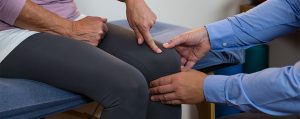From Swelling after an Injury to Static Stretches for Improved Flexibility: Top 10 Blogs of 2022
As the 2022 year ends, we looked back at the top ten blogs that our knowledgeable clinicians here at Athletico wrote on various topics related to injuries, the effectiveness of dry needling, the benefits of stretching, and more!
5 Stretches To Bring With You When You’re On The Go
Life never seems to slow down. A work event, then a workout followed by a musical for the kids – it doesn’t stop. Sometimes it seems like there isn’t enough time to get anything done. Tight muscles can pop up due to poor posture or stress throughout life’s busyness so let’s take a look at some easy stretches you can do on the go!
Importance of Therapy After Mastectomies
Did you know that one in eight women will develop invasive breast cancer in their lifetime1? Common surgeries and procedures to treat women diagnosed with invasive breast cancer include lumpectomies, mastectomies, sentinel lymph node biopsies, and axillary lymph node dissection2. Mastectomies are the most common surgery for breast cancer but are the most invasive type of treatment. Mastectomies are recommended to decrease the likelihood of recurrence and lower the risk of further surgical procedures in the future.
PT Travel Hacks for Pain-free Vacation
Traveling should be fun and not a precursor to injury. Use these tips to help make your next trip as pain-free as possible.
Golf Swing Stretches/Exercises to Reduce Arm and Shoulder Soreness
You’ve made the turn. You have a score that says you might just be having the round of your life. A few practice swings and the 10th fairway will be your chipping mat. Driver’s out of the bag, glove on, and the ball teed up nice and high. You start shaking off the memories of the chunked sand shot on the last hole and set up to take a few practice swings. The first one feels good. You step up and swing for the fences. In a moment, your shoulder hurts, your face cringes, and you cleared that fence right into the HOA president’s pool.
3 Exercises to Perform After An Ankle Sprain
Ankle sprains are an extremely common lower extremity injury in both athletic and general populations. Ankle sprains account for up to 40% of lower extremity sports injuries1 and are one of the most common injuries to be seen in the emergency room2. Most ankle sprains occur when the ankle “rolls” inward, resulting in pain, swelling, loss of motion, and bruising around the ankle.
Ankle Strengthening Exercises to Try at Home/Work/Anywhere
The foot and ankle complex are the powerhouse of the body. It is the first thing touching the ground and absorbing everything the body does. While the foot and ankle are very important structures for the body, they are also very complex. There are 26 bones, 30 joints, and more than 100 muscles, ligaments, and tendons that help to support the foot and ankle. Having a strong foot and ankle is essential for injury prevention. How can you increase the strength of your ankles on the fly? Try doing 3 sets of 10 repetitions of these 5 exercises on the go.
Static Stretches for Improved Flexibility
Are you dealing with tight muscles, or maybe you don’t feel very flexible? When used correctly, stretching can be a useful tool to address tight muscles and improve muscle flexibility. Recent studies have confirmed that performing low intensity stretches over a long period can improve flexibility. Let’s look at a handful of simple stretches you can do to improve tight muscles.
